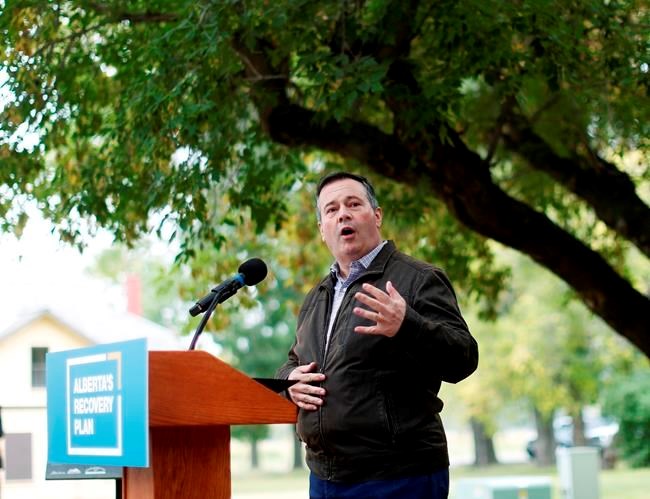EDMONTON — Alberta Health projections released by the Opposition NDP predict COVID-19 hospitalization rates could soar to 775 by mid-December and the number of intensive care patients could reach 161.
NDP Leader Rachel Notley says the numbers suggest the United Conservative government waited too long to act then introduced ineffective half measures to combat the rapid spread of the novel coronavirus.
“Our province is reporting the highest rate of COVID in the country,” Notley told Premier Jason Kenney during question period Tuesday.
“The models showed you a second wave was coming. Why did you not prepare?”
Kenney’s government has in recent weeks declined to provide internal projections on potential COVID-19 effects on hospital and intensive care wards, although Kenney said this week those numbers may be provided in the coming days.
The latest numbers were leaked to the NDP.
Alberta has seen new daily case counts above 1,000 for almost two weeks, putting a significant strain on the health system.
There are a total of 173 intensive care beds in Alberta. On Tuesday, there were 97 COVID-19 ICU patients, part of a total 479 in hospitals.
Alberta Health Services, the front-line operational arm of Alberta Health, is now rearranging and reassigning space, staff and patients to create another 250 ICU beds.
AHS spokesman Kerry Williamson, in an email, said Calgary exceeded maximum ICU capacity Monday but had space because 10 new beds were added. Edmonton was at 95 per cent ICU capacity but had 18 spaces available because 20 new beds were added.
On top of that, 20 acute-care hospitals, including the major ones in Calgary and Edmonton, are dealing with COVID outbreaks of their own.
To stem the surge, Kenney announced new health restrictions last week aimed at reducing community spread while keeping businesses and the economy as open as possible.
No gatherings are allowed in people’s home beyond those who already live there. Restaurants and bars can stay open under tight restrictions: only six people at a table and they all must be from the same home.
The province will review the new rules around mid-December and may intensify or add to them if the skyrocketing spread continues.
The NDP and some physicians say the new rules, while aimed at balancing health and the economy, will ultimately fail both and that a short, sharp lockdown of the economy is the way to go.
Alberta is also facing the challenge of tracking spread while not knowing where most of the recent cases came from.
As of Monday, there were 16,454 active cases. Of those, it’s not known where more than 80 per cent of them contracted the virus.
The contact tracing program has been triaged twice in recent weeks to focus on recent and high-priority cases, such as children and health-care workers.
Kenney reiterated that Alberta has 800 contact tracers but is working to hire 400 more while moving more part-time tracers to full-time status.
“Alberta Health Services is pulling out the stops and has been for weeks to add capacity,” Kenney told the house.
“We made it clear to them from Day One that budget is not an issue, that we are giving them maximum resources to surge in hiring and training, and bringing people on board."
Notley criticized Kenney for not moving faster during the summer to hire more contact tracers. She noted Alberta lags behind other comparable provinces.
“B.C. has 26 contact tracers per 100,000 (people). Saskatchewan and Manitoba, 30. Ontario, 27. Alberta, 18,” said Notley.
“Contact tracing is strained across the country, that is true, but only in this province is it broken.”
The NDP said that for Alberta’s population of about four million, 1,300 contact tracers are required.
This report by The Canadian Press was first published Dec. 1, 2020.
Dean Bennett, The Canadian Press



